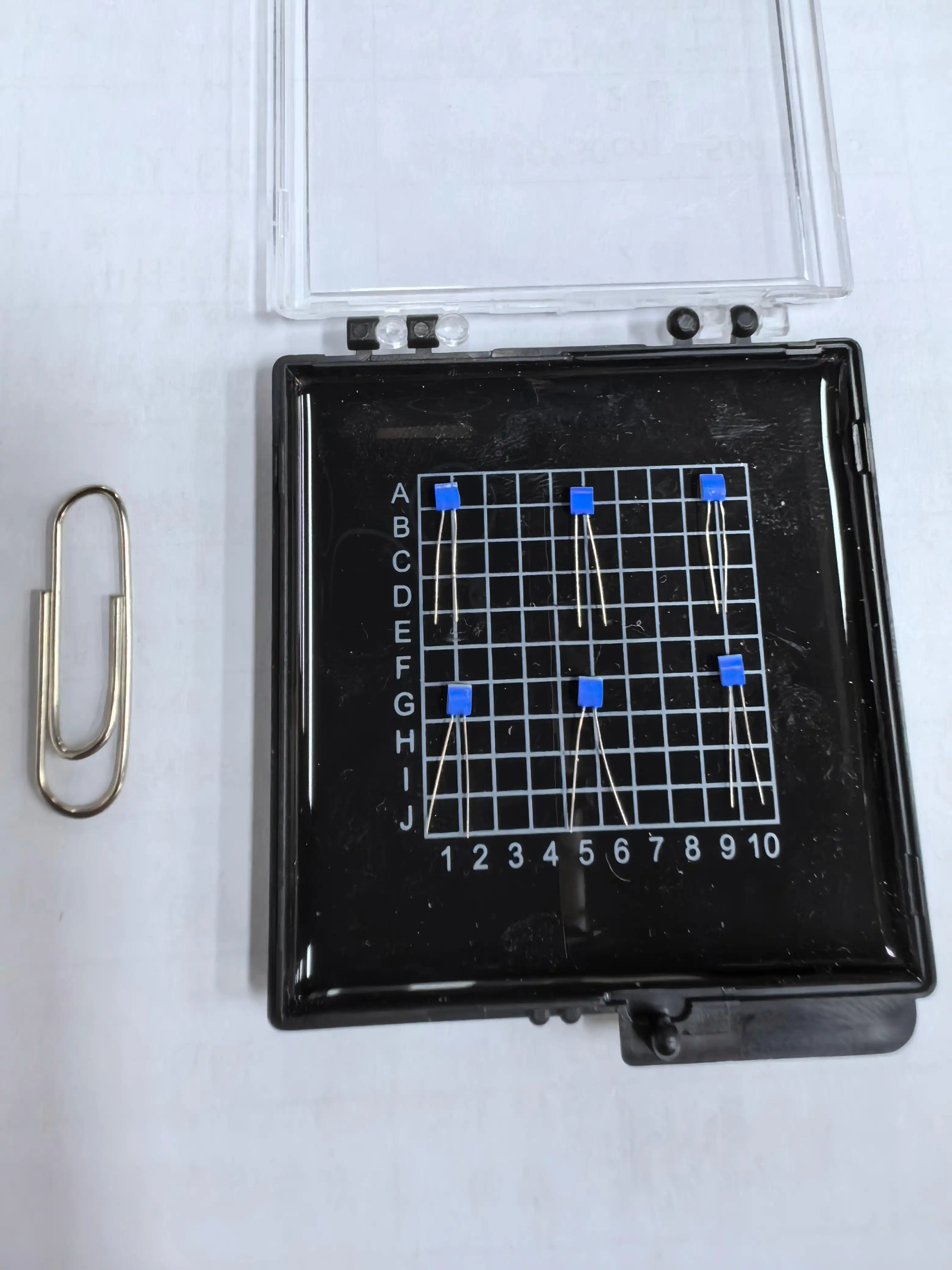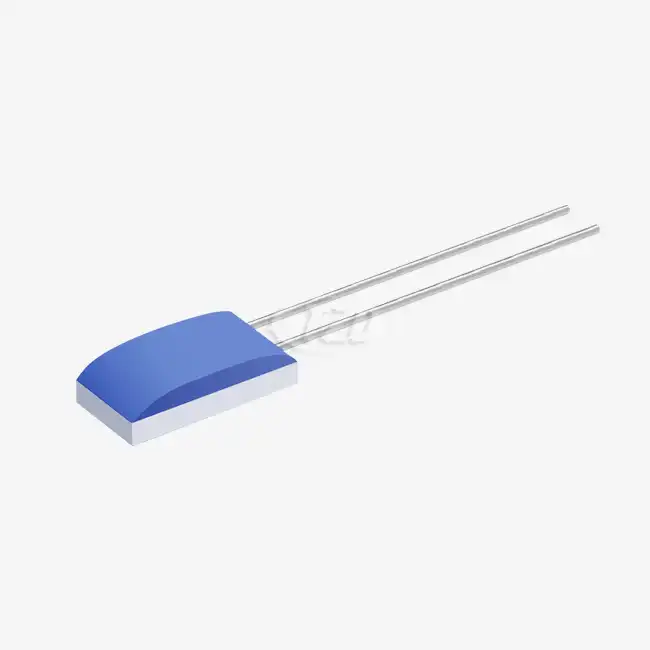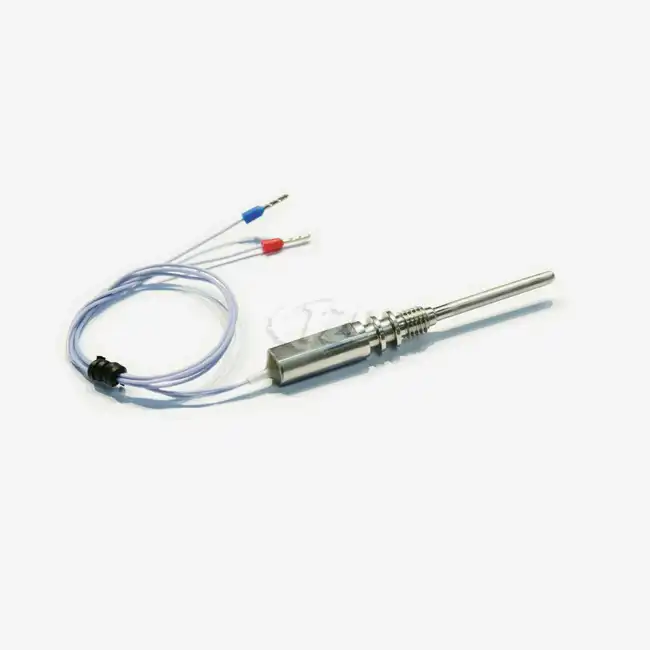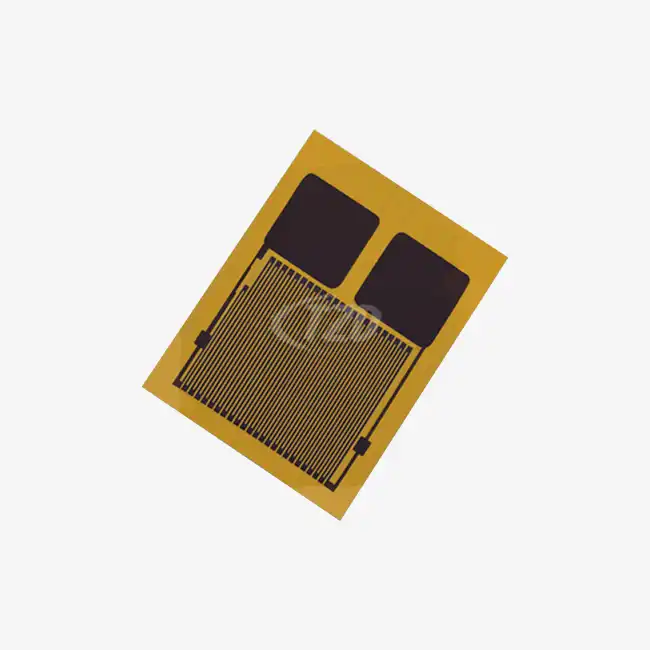Introducing RTDs and Their Advantages
Resistance Temperature Detectors (RTDs) are precision temperature sensors that operate on the principle of electrical resistance change in metals as temperature varies. Among the various types of RTDs, the screw type thermal resistance temperature sensor stands out for its robust design and versatility in industrial applications.
Types of RTDs and Their Characteristics
RTDs come in various types, with platinum-based sensors being the most common. The Pt100, Pt500, and Pt1000 are popular choices, each offering specific advantages:
- Pt100: Offers a resistance of 100 ohms at 0°C, providing a good balance between sensitivity and cost.
- Pt500: With 500 ohms at 0°C, it offers increased sensitivity compared to Pt100.
- Pt1000: Provides the highest sensitivity among the three, with 1000 ohms at 0°C.
These RTDs comply with the IEC60751 standard and boast a temperature coefficient of 3850 ppm/℃, ensuring consistent performance across a wide temperature range.
Accuracy and Stability of RTDs
One of the key advantages of RTDs, particularly the screw type thermal resistance temperature sensor, is their exceptional accuracy and stability. They offer different accuracy classes:
- 1/3B Class: Tolerance ≤ ±0.10°C (0°C to +150°C)
- A Class: Tolerance ≤ ±0.15°C (-50°C to +300°C)
- B Class: Tolerance ≤ ±0.30°C (-70°C to +300°C)
With an exactness of ± 0.01 Ω and long-term robustness coast ≤ 0.04%, RTDs allow tried and true estimations over opened up periods. This soundness is noteworthy in mechanical shapes where dependable, correct readings are crucial.
Temperature Range and Applications
RTDs, including the screw type thermal resistance temperature sensor, cover an impressive temperature range from -200℃ to +850℃. This wide range makes them suitable for various applications, including:
- Industrial process control
- HVAC systems
- Food and beverage processing
- Pharmaceutical manufacturing
- Automotive testing
The versatility of RTDs is further enhanced by their ability to withstand harsh environments. With a vibration resistance of 40g and impact resistance of 100g, they can operate reliably in challenging industrial settings.

Exploring Thermocouple Technology
While RTDs excel in accuracy and stability, thermocouples have their own set of advantages that make them suitable for certain applications. Understanding thermocouple technology is crucial for making an informed decision between RTDs and thermocouples.
Principles of Thermocouple Operation
Thermocouples work on the Seebeck impact, where two different metals joined at one conclusion create a little voltage when uncovered to temperature contrasts. This voltage is relative to the temperature distinction between the intersection and the reference point.
Types of Thermocouples and Their Applications
Thermocouples come in various types, each suited for different temperature ranges and environments:
- Type K: Suitable for general-purpose applications (-200°C to +1350°C)
- Type J: Ideal for reducing atmospheres (-40°C to +750°C)
- Type T: Excellent for cryogenic applications (-250°C to +350°C)
- Type E: High sensitivity, suitable for sub-zero temperatures (-200°C to +900°C)
- Type N: Improved stability at high temperatures (-270°C to +1300°C)
Advantages and Limitations of Thermocouples
Thermocouples offer several advantages:
- Wide temperature range, extending to extreme high temperatures
- Fast response times, ideal for rapid temperature changes
- Rugged construction suitable for harsh environments
- Self-powered, requiring no external excitation
However, they also have limitations:
- Lower accuracy compared to RTDs
- Susceptibility to electrical noise
- Require cold junction compensation for accurate measurements
- Potential for degradation over time in certain environments
Comparative Analysis: RTDs vs Thermocouples
To make an informed decision between RTDs (including screw type thermal resistance temperature sensors) and thermocouples, it's essential to compare their key characteristics and performance in various aspects.
Accuracy and Precision
RTDs generally offer superior accuracy and precision compared to thermocouples. The screw type thermal resistance temperature sensor, for instance, can achieve accuracies as high as ±0.10°C in the 1/3B Class. Thermocouples typically have accuracies in the range of ±0.5°C to ±2.2°C, depending on the type and temperature range.
Temperature Range and Response Time
While RTDs cover a wide temperature range (-200℃ to +850℃), thermocouples can measure even higher temperatures, with some types reaching up to 1800°C. In terms of response time, thermocouples generally react faster to temperature changes, with response times as low as 0.1 seconds. RTDs, including the screw type thermal resistance temperature sensor, have slightly slower response times, typically around 0.05 to 10 seconds, depending on the design.
Stability and Drift
RTDs excel in long-term stability, with drift rates as low as 0.04% per year. This makes them ideal for applications requiring consistent measurements over extended periods. Thermocouples, while generally stable, can experience more significant drift, especially at higher temperatures or in harsh chemical environments.
Environmental Considerations
Both RTDs and thermocouples can be designed for harsh environments. The screw type thermal resistance temperature sensor, with its rugged construction, offers excellent vibration and impact resistance (40g and 100g, respectively). Thermocouples, due to their simpler construction, can sometimes withstand even more extreme conditions, especially at very high temperatures.
Cost and Complexity
Generally, thermocouples are less expensive than RTDs, making them attractive for applications where cost is a primary concern. However, RTDs often provide better value in the long run due to their superior accuracy and stability. The complexity of the measurement system is typically higher for RTDs, as they require a current source and more sophisticated signal conditioning.
Application-Specific Considerations
The choice between RTDs and thermocouples often comes down to specific application requirements:
- For high-precision measurements in moderate temperature ranges, RTDs, especially the screw type thermal resistance temperature sensor, are often the preferred choice.
- In applications involving extreme high temperatures or requiring very fast response times, thermocouples may be more suitable.
- For cryogenic applications, specialized RTDs or Type T thermocouples are typically used.
- In environments with strong electromagnetic interference, RTDs might offer better performance due to their resistance-based measurement principle.

Conclusion
Choosing between RTDs and thermocouples requires careful consideration of your specific application needs. RTDs, including the screw type thermal resistance temperature sensor, offer superior accuracy, stability, and reliability over a wide temperature range, making them ideal for precise industrial measurements. Thermocouples, while less accurate, excel in extreme temperature environments and rapid response applications.
For applications demanding high accuracy within the -200℃ to +850℃ range, RTDs are often the superior choice. Their long-term stability and precision make them invaluable in critical processes where consistent, reliable measurements are essential. The screw type thermal resistance temperature sensor, with its robust design and versatility, is particularly well-suited for industrial environments where both accuracy and durability are required.
For more information on advanced temperature sensing solutions, including customized RTDs and screw type thermal resistance temperature sensors, please contact our experts at sales11@xatzd.com. Our team is ready to assist you in finding the perfect temperature sensing solution for your specific application.




